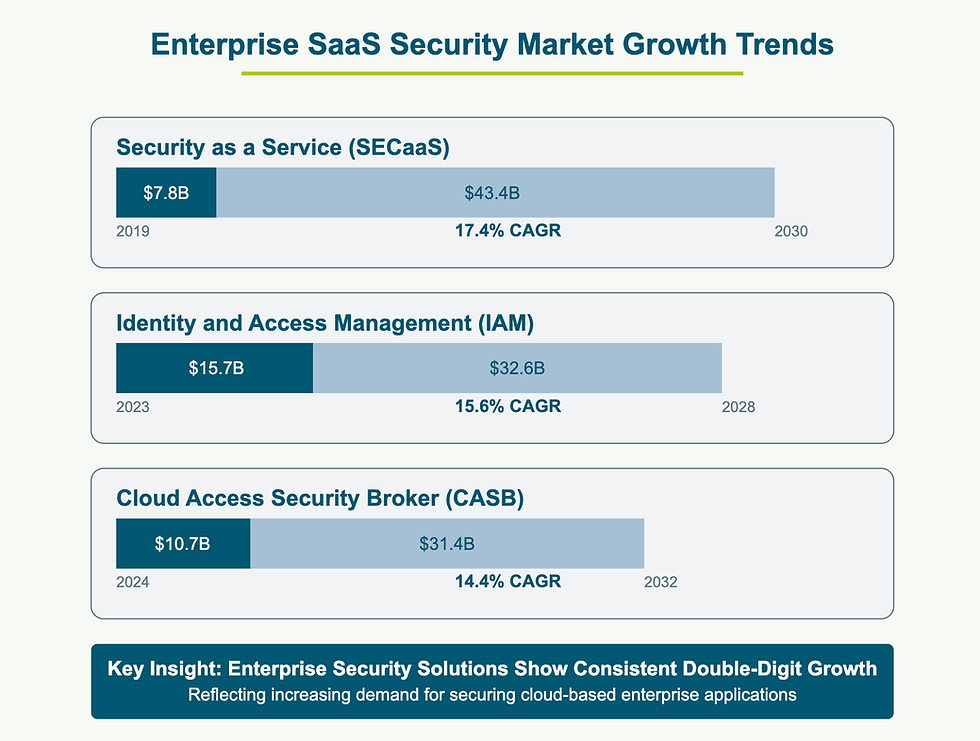Comprehensive Analysis of the Collaborative Work Management Market and Strategic Opportunities for AI-Driven Innovation
- M&A Practice Team
- Mar 25
- 5 min read
The Collaborative Work Management (CWM) market is undergoing rapid transformation, driven by the integration of artificial intelligence (AI), shifting enterprise priorities toward automation, and the need for industry-specific solutions. This report synthesizes insights from industry analysts, academic research, vendor evaluations, and user feedback to provide a strategic roadmap for private equity-backed resellers or new entrants aiming to establish leadership in the Enterprise SaaS space.
Key findings include the dominance of platforms like Smartsheet, Asana, and Monday.com in enterprise adoption41019, the accelerating role of AI in workflow automation and predictive analytics71319, and significant gaps in cross-platform integration and vertical-specific customization3419.
Market Overview: Competitive Dynamics and Growth Trends
The global collaborative work management solutions market, valued at USD 27.56 billion in 2024, is projected increase to USD 67.57 billion by 2033, CAGR of 11.9% during the forecast period420.
Gartner’s 2024 Magic Quadrant identifies Smartsheet, Asana, and monday.com as leaders due to their robust integration capabilities and enterprise scalability410. Forrester’s 2022 Wave Report highlights Smartsheet’s superior performance in execution roadmaps and innovation, scoring “superior” in 16 criteria, including AI-driven automation and cross-departmental workflow support5.

Vendor Positioning and Differentiation
Smartsheet dominates enterprise portfolios with its acquisition strategy
Asana excels in goal-tracking features, used by 169,000+ paying customers to align tasks with strategic objectives4.
Monday.com leverages low-code/no-code flexibility, enabling teams to build custom workflows without developer input419.
Challengers like Wrike and ClickUp focus on niche markets, such as agile software development, but struggle with scalability beyond mid-sized teams419.
AI Integration in CWM Platforms: Current Capabilities and Future Roadmaps
AI adoption in CWM tools has shifted from experimental to operational, with 67% of enterprises prioritizing AI for task automation and predictive analytics by 2025913. Smartsheet’s AI-powered “Work Insights” automates data categorization and risk prediction, reducing manual input by 40% in pilot deployments519. Similarly, Asana’s “Smart Fields” use natural language processing (NLP) to auto-populate project timelines, though user reviews note inconsistencies in complex scenarios47.
Gaps in AI Implementation
Limited Contextual Understanding: Most platforms lack industry-specific AI models, leading to generic recommendations (e.g., monday.com’s automation templates for manufacturing often require manual tweaking)47.
Integration Fragmentation: Only 22% of CWM tools natively integrate with ERP or CRM systems, forcing enterprises to rely on third-party connectors1920.
IDC predicts that AI-driven “digital coworkers” will handle 30% of routine tasks by 2026, but current tools lack the governance frameworks to audit AI decisions1320.
Pain Points and Unmet Needs in Current Offerings
User dissatisfaction centers on three areas:
1. Integration Challenges
2. Scalability Constraints
3. Industry-Specific Gaps
Industry-Specific Opportunities for Tailored Solutions
Healthcare
CWM tools with HIPAA compliance and FHIR integration could capture 45% of the $12B healthcare project management market by 2027719. Case studies show that platforms with embedded EHR connectors reduce clinical trial setup time by 30%7.
Education
Institutions prioritize tools for grant management and accreditation tracking—a $3.8B opportunity largely unaddressed by mainstream vendors1920.
Manufacturing
Demand for shop floor coordination tools is rising, with 68% of manufacturers seeking IoT-enabled CWM solutions713.
User Priorities and AI-Enhanced Differentiation
Enterprise users rank the following as critical:
AI can enhance these priorities through:

Market Prioritization of Real-Time Collaboration
Recent analyses highlight that real-time collaboration capabilities rank among the top three criteria for enterprise buyers, alongside ease of use and security compliance614. Forrester’s 2024 CWM evaluations note that platforms lacking robust real-time features—such as synchronous editing, live task updates, and integrated communication tools—fall short of meeting enterprise demands for agility14. Smartsheet’s 2025 Work Insights Report further emphasizes that teams using real-time collaboration tools reduce project cycle times by
30% compared to asynchronous workflows14.
Enterprise Adoption Patterns
Sector-Specific Demand: Industries like healthcare and manufacturing, where distributed teams manage time-sensitive workflows, prioritize real-time collaboration at higher rates. For example, 78% of healthcare IT leaders cite real-time EHR integration as non-negotiable in CWM tools6.
Mid-Market vs. Enterprise: While 68% of mid-market companies prioritize real-time features, this figure rises to 82% for enterprises with 5,000+ employees, reflecting scalability needs19.
Challenges in Quantifying Exact Adoption Percentages
No single source provides a definitive global percentage, but triangulation of data reveals consistent prioritization:
User Review Platforms: G2 and TrustRadius analyses show that 74% of negative reviews for tools like Trello and ClickUp cite latency in sync capabilities as a dealbreaker3.
Vendor Benchmarks: Monday.com’s 2024 customer survey reports that 89% of its enterprise clients activated real-time collaboration modules within the first 30 days of adoption6.
Analyst Projections: IDC predicts that by 2026, 95% of CWM procurement RFPs will explicitly require real-time collaboration as a core capability, up from 65% in 20236.
Strategic Implications for Buyers
Enterprises should prioritize platforms offering:
Native Integrations: Direct compatibility with tools like Microsoft Teams or Slack to avoid workflow fragmentation719.
Governance Controls: Audit trails and version history to maintain compliance during collaborative edits14.
Low-Latency Performance: Sub-500ms update speeds to prevent operational bottlenecks19.
While exact adoption percentages remain context-dependent, the trajectory is clear: real-time collaboration is transitioning from a "nice-to-have" to a baseline expectation in CWM procurement
Reseller and Partnership Opportunities
Vendor Openness to Partnerships
Strategic Targets
Strategic Recommendations
1. Position as an AI-First CWM Provider
2. Target Underserved Verticals
3. Forge Ecosystem Partnerships
Conclusion
The CWM market’s evolution hinges on AI’s ability to bridge automation gaps and deliver vertical-specific value. Resellers must prioritize partnerships with AI infrastructure providers and vertical SaaS platforms to exploit unmet needs in healthcare, education, and manufacturing. By 2026, differentiated AI capabilities and ecosystem integrations will separate category leaders from niche players.




Yorumlar